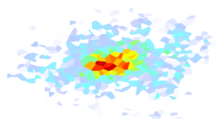shakelib.utils.utils¶
-
shakelib.utils.utils.replace_dyfi(stationfile, dyfi_xml, min_nresp=3)[source]¶ Remove any non-instrumented data from station file, add DYFI.
- Parameters:
- Returns:
Object containing merged data.
- Return type:
-
shakelib.utils.utils.get_extent(config, ipe, rupture=None)[source]¶ Method to compute map extent from rupture. There are numerous methods for getting the extent:
It can be specified directly in the config file,
it can be hard coded for specific magnitude ranges in the config file, or
it can be based on the MultiGMPE for the event.
All methods except for the first require a rupture object.
If no config is provided then a rupture is required and the extent is based on a generic set of active/stable.
- Parameters:
config (ConfigObj) – ShakeMap config object.
ipe (VirtualIPE) – An VirtualIPE instance.
rupture (Rupture) – A ShakeMap Rupture instance.
- Returns:
lonmin, lonmax, latmin, latmax rounded outward to the nearest 30 arc seconds.
- Return type:
